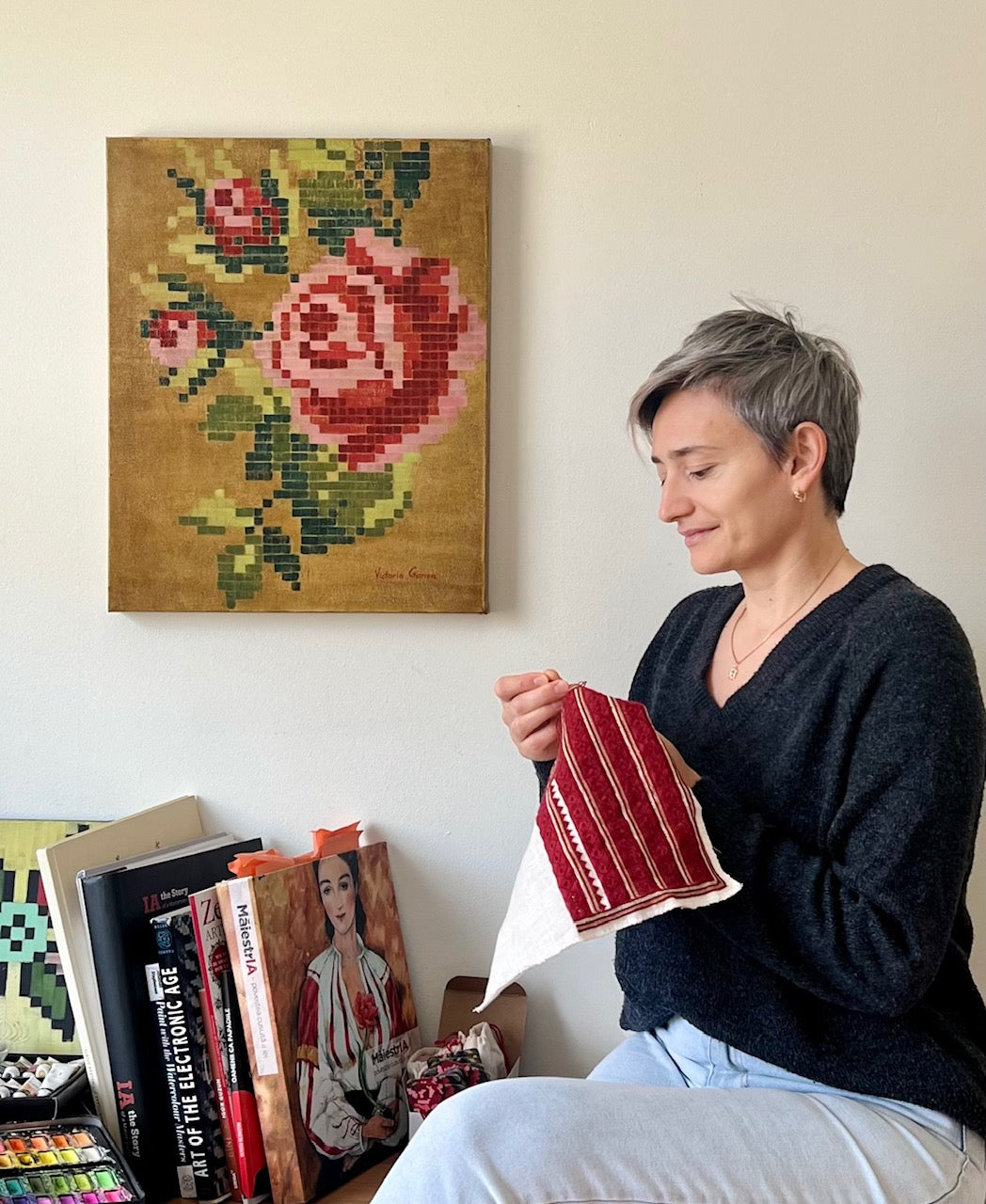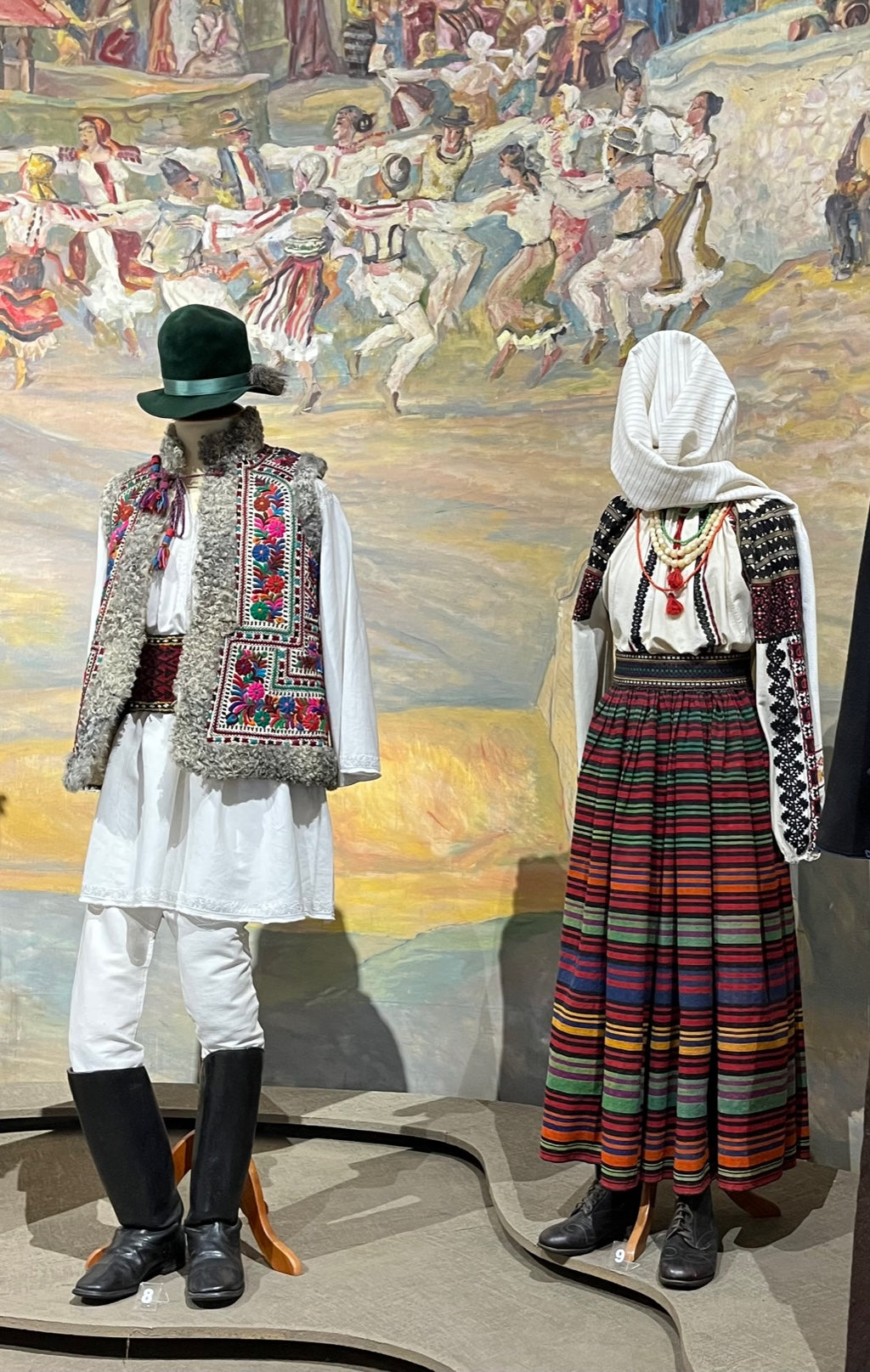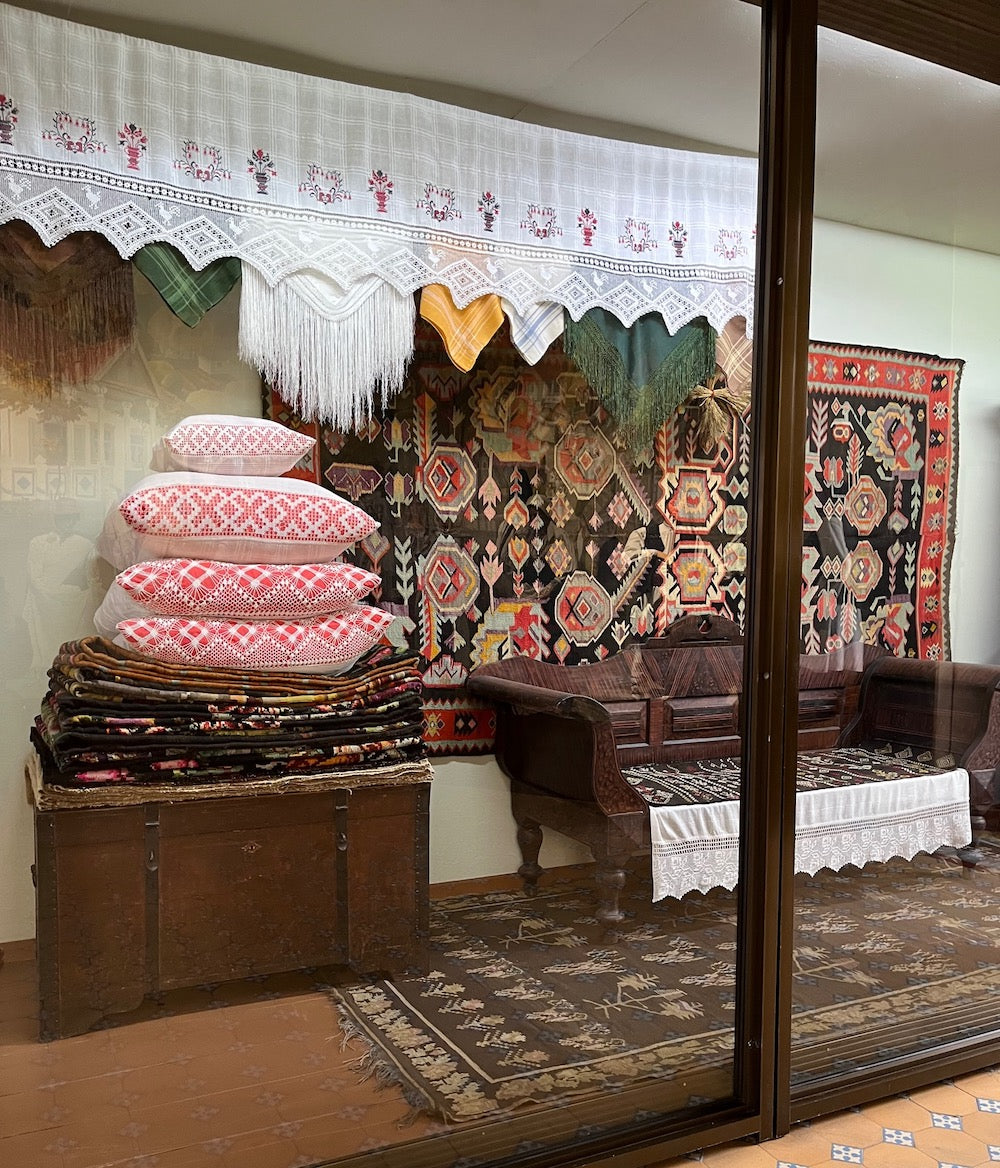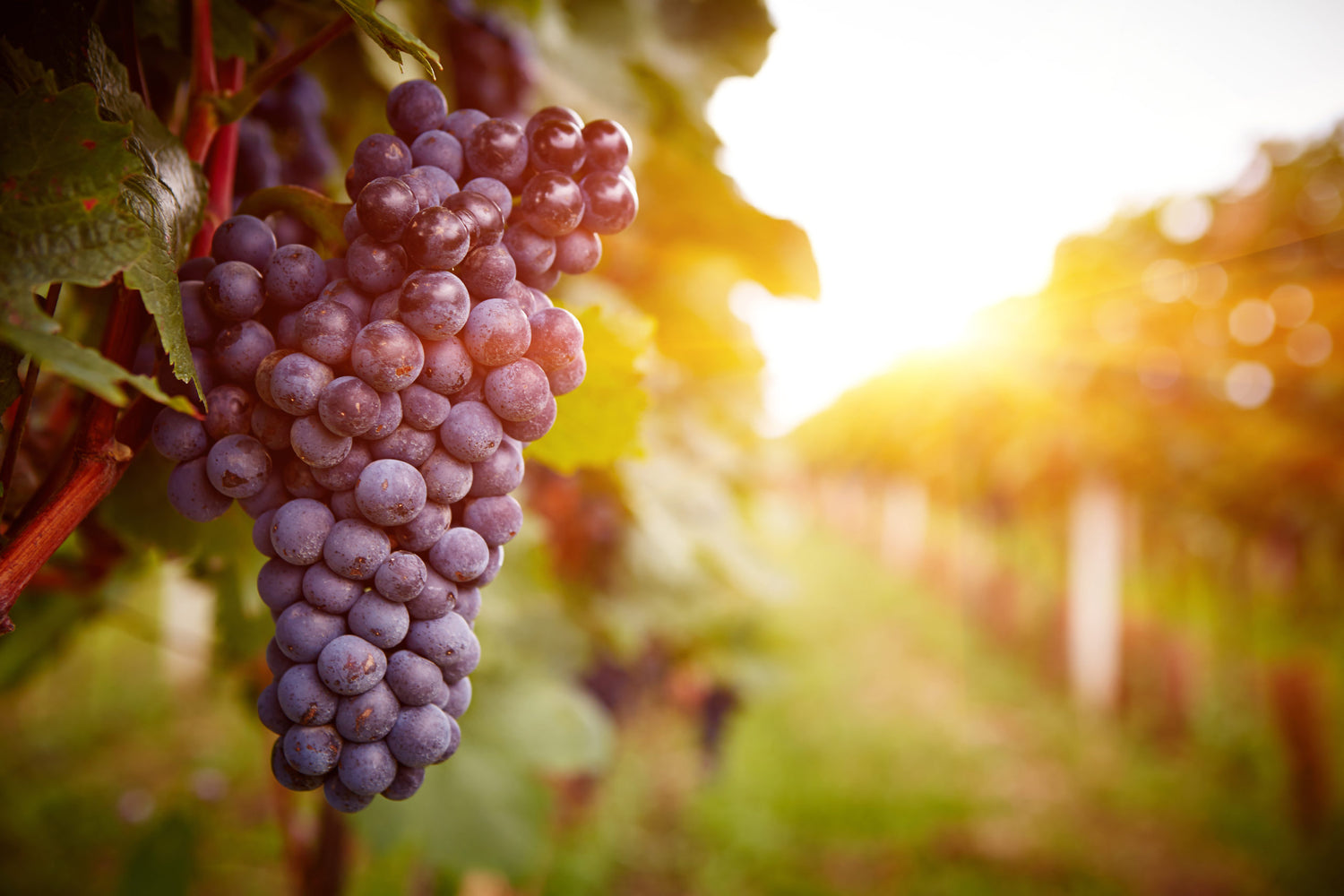Traditions and Heritage
Moldova small country with big heart and rich traditions

My art is inspired by women and by my home country heritage. I always loved the customs of my country, the traditional costume, the dancing, the food, but after I left Moldova in my early-twenties I lost connection with them.
As I travelled, lived in different countries and moved continents I widened my horizons and learned a lot about myself.
On my journey I've met amazing people, learned and experienced new things and made new friends. Subconsciously I was looking to heal the traumas with which I left home, in a way that I thought was best for me.
Over the last couple of years I realised that the path of healing is leading me back to my roots, my home and traditions and it became my main inspiration.
Moldovan national style is preserved on fabrics such as rugs, carpets, embroidery on the national costumes, towels, pillow cases, etc as a separate kind of art. This decorative approach to fabrics has its own language and style.
These patterns take on both geometric and organic styles. Typically they will depict people, birds, animals, flowers, buds, leaves, branches, the tree of life etc.
Ornamental creations are stylized using a combination of simple shapes like squares, triangles and rosettes, as well as jagged, straight or dotted lines.
You can discover some of the most beautiful Moldovan traditions below.

Traditional costume and IA the traditional blouse
One of the distinctive elements of the Moldovan people is the traditional costume, bringing together various representative forms of culture and national folklore.
The art of the traditional blouse with embroidery on the shoulder is an element of cultural identity in Moldova and Romania, as historically we share our culture and traditions. Also called IA, it's an essential part of traditional folk dress for men and women.
Traditional blouses are made entirely by hand, It's a simple cut blouse made of white cotton, linen or hemp and decorated with rich embroidery of traditional ornamentations and motifs, especially on the sleeves, chest and neck.
d on the UNESCO Intangible Heritage List of Humanity on 1 December 2022, and celebrated by both nations.
This picture was taken by me in the National Museum of Ethnography and Natural History in Chisinau, capital of Moldova. The museum has a beautiful collection of national costumes on display. Behind the costumes is a huge mural illustrating the Moldovan landscape and our traditions, one of which is the traditional dance 'Hora'.

The Moldovan hand-woven carpet
Throughout history, the Moldovan traditional woven carpet has acquired a significance as a symbol of Moldovan handicraft that has evolved over the years, but has preserved the authenticity of traditions.
The handwoven rug is one of the most beautiful handicrafts in the Moldovan home. As a child I spent summers at my grandma's in the village, and in one of the rooms there was a big wool handmade rug hanging across an entire wall. It is still there and it depicts a scene in the woods with two deer framed by roses.
Wool is the main raw material when it comes to weaving. It might take up to 10 kg of 100% natural sheep's wool to make one rug and the yarn is dyed using natural sources of color, such as beetroot, walnut, onion peel or other plants. The color range obtained by using plant pigments is remarkable for its subtle and highly refined hues.
Looking at a traditional carpet, you will see labor, value, tradition, secular roots and whole generations reflected in it.
Carpet-making has a long history. Since back in the 18th century, carpets have been given as wedding gifts. They were a must-have for furnishing a Moldovan household. The fact that carpets were found in palaces, manors and monasteries shows their cultural prestige and artistic value.
The traditional techniques of making carpets in Romania and the Republic of Moldova were inscribed in the UNESCO Cultural Heritage list in 2016.

Winemaking
Moldova holds a rich tradition in winemaking dating back thousands of years. Low hills, sun-drenched plains, flowing rivers, and moderate climate shaped by the Black Sea basin provide ideal conditions to grow grapes, rivaling other renowned winemaking regions across the world.
Growing up I was involved in the winemaking process as my grandma had a vineyard and made home made wine. Late September and October the country smells of grapes and fresh wine being made almost in every household in the countryside as well as in the many wineries of Moldova.
One of my best childhood memories is of the warm evenings in the village. After a day of work helping my grandma in the field, we would sit down all together to have dinner in the shade of the vineyard in front of her house.
Interesting fact - Moldova has the biggest wineries in the world!
